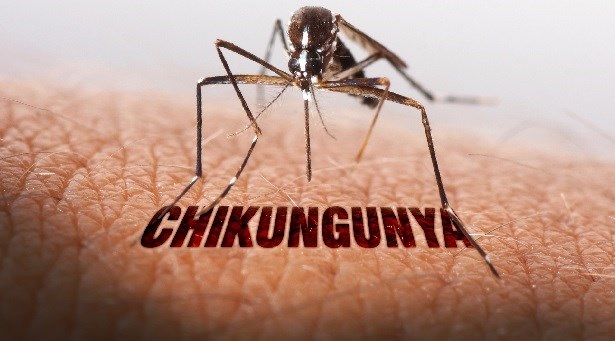Chikungunya Cases in Nagpur Cross 1,000 Mark for the First Time

Chikungunya cases Nagpur 2024: Nagpur has hit a troubling milestone in its battle against chikungunya, a mosquito-borne viral disease. For the first time in the city’s history, confirmed cases have surpassed the 1,000 mark. As of October 18, 2024, a total of 1,012 cases were reported. The last major outbreak in 2006-07 saw fewer than 800 cases, making this a significant surge that has alarmed health authorities.
The Recent Surge in Cases
Out of the total cases, 80%—roughly 810—were recorded between August 1 and October 18. The rapid increase began in August, with 355 new cases, followed by a peak of 402 in September. Though there has been a slight decrease in numbers in October, the month has already seen 137 cases within the first 19 days. These numbers paint a clear picture of the alarming situation unfolding in Nagpur.
Month-Wise Chikungunya Case Breakdown (Chikungunya cases Nagpur 2024)
| Month | Number of Cases |
|---|---|
| January | 0 |
| February | 0 |
| March | 0 |
| April | 0 |
| May | 0 |
| June | 30 |
| July | 88 |
| August | 355 |
| September | 402 |
| October (1-18) | 137 |
| Total | 1,012 |
Understanding Chikungunya
Chikungunya is a viral disease transmitted to humans by infected mosquitoes, primarily the Aedes species. It causes sudden onset fever, joint pain, and in some cases, long-term arthritis-like symptoms. Though it’s rarely fatal, the disease can lead to debilitating pain, especially for older adults.
Why Are Cases Rising So Quickly?
Doctors and experts have identified multiple factors contributing to the sharp rise in chikungunya cases:
1. Improved Diagnosis
According to Dr. R.G. Chandak, a critical care specialist, one reason for the higher numbers is better diagnosis. “Doctors now have a better understanding of chikungunya symptoms and only those displaying specific signs are being tested. This has resulted in a higher test positivity rate,” he explained. In September, 24% of tests returned positive, and in early October, this figure rose to 26%.
2. Seasonal Factors
Chikungunya cases started emerging in Nagpur during the monsoon season in June, when stagnant water became a breeding ground for mosquitoes. Rainfall plays a key role in the spread of mosquito-borne diseases, and a slight drop in cases in October can be attributed to a temporary reduction in rain over the past two weeks.
3. Mosquito Breeding Patterns
Aedes mosquitoes, responsible for spreading chikungunya, thrive in stagnant water. With the monsoon season creating an abundance of breeding sites, Nagpur became a hotspot for the disease.
Health Experts on the Future Outlook
Despite a slight decrease in the number of new cases in October, health experts warn that this may only be temporary. General physician Dr. Manish Jadhav expressed concern that a resurgence could occur if rains continue in the coming weeks, providing new breeding grounds for mosquitoes.
Will There Be Another Surge?
While reduced rainfall has led to a slight dip in mosquito activity, the rains are expected to return. This could bring a new wave of chikungunya cases, making it crucial for Nagpur’s residents to stay vigilant. Preventive measures are the only effective way to control the spread of the disease.
Prevention and Safety Measures
Preventing chikungunya involves minimizing mosquito exposure. Here’s what doctors are advising residents to do: (Chikungunya cases Nagpur 2024)
1. Eliminate Stagnant Water
Mosquitoes breed in stagnant water, so it’s essential to drain any standing water in and around homes. This includes emptying containers, cleaning birdbaths, and ensuring there’s no water accumulation in plant pots or gutters.
2. Use Mosquito Repellents
Repellents can help reduce mosquito bites. Residents are encouraged to use them, especially in the evenings when mosquitoes are most active.
3. Install Mosquito Nets and Screens
Keeping mosquitoes out of living spaces is another vital step. Installing mosquito nets over beds and using window screens can significantly reduce mosquito bites.
4. Wear Protective Clothing
Wearing long sleeves and pants can provide an added layer of protection against mosquito bites.
What Is Being Done to Combat the Spread?
Local health authorities in Nagpur are stepping up efforts to combat the spread of chikungunya. From increasing public awareness campaigns to encouraging residents to take preventive measures, the focus is on minimizing mosquito breeding sites. Additionally, fumigation efforts are being ramped up in areas where case numbers are high.
The Importance of Public Cooperation
Preventing chikungunya is not solely the responsibility of health authorities. Public cooperation is crucial in controlling the spread of the disease. Residents must play an active role by keeping their surroundings free of stagnant water and taking personal precautions.
The Economic and Social Impact of Chikungunya
1. The Cost of Treatment
While chikungunya is not typically life-threatening, it can lead to significant medical expenses, particularly for long-term joint pain. For many, the financial burden of treatment adds to the strain caused by the disease.
2. Impact on Productivity
The severe joint pain caused by chikungunya can render individuals unable to work for weeks, leading to a drop in productivity, especially in labor-intensive sectors.
What Lies Ahead for Nagpur?
Nagpur’s battle with chikungunya is far from over. While the slight decrease in cases in October provides a glimmer of hope, the threat of resurgence looms large. With more rains expected, mosquito breeding may increase, pushing the city into another wave of infections. Preventive action and public awareness are critical in the fight against chikungunya.
1. What are the first signs of chikungunya?
The initial symptoms of chikungunya include sudden fever and severe joint pain, often accompanied by headache, muscle pain, and rash.
2. How can chikungunya be prevented?
Chikungunya can be prevented by avoiding mosquito bites, eliminating stagnant water where mosquitoes breed, and using mosquito repellents and nets.
3. Is chikungunya life-threatening?
Chikungunya is rarely fatal, but it can cause severe joint pain and long-term discomfort, especially in older adults.
4. Can chikungunya recur?
While chikungunya does not typically recur, joint pain and other symptoms can last for months or even years in some cases.
5. What should I do if I suspect I have chikungunya?
If you experience symptoms like fever and joint pain, seek medical attention immediately. Your doctor can recommend tests and provide treatment options to manage the symptoms.









